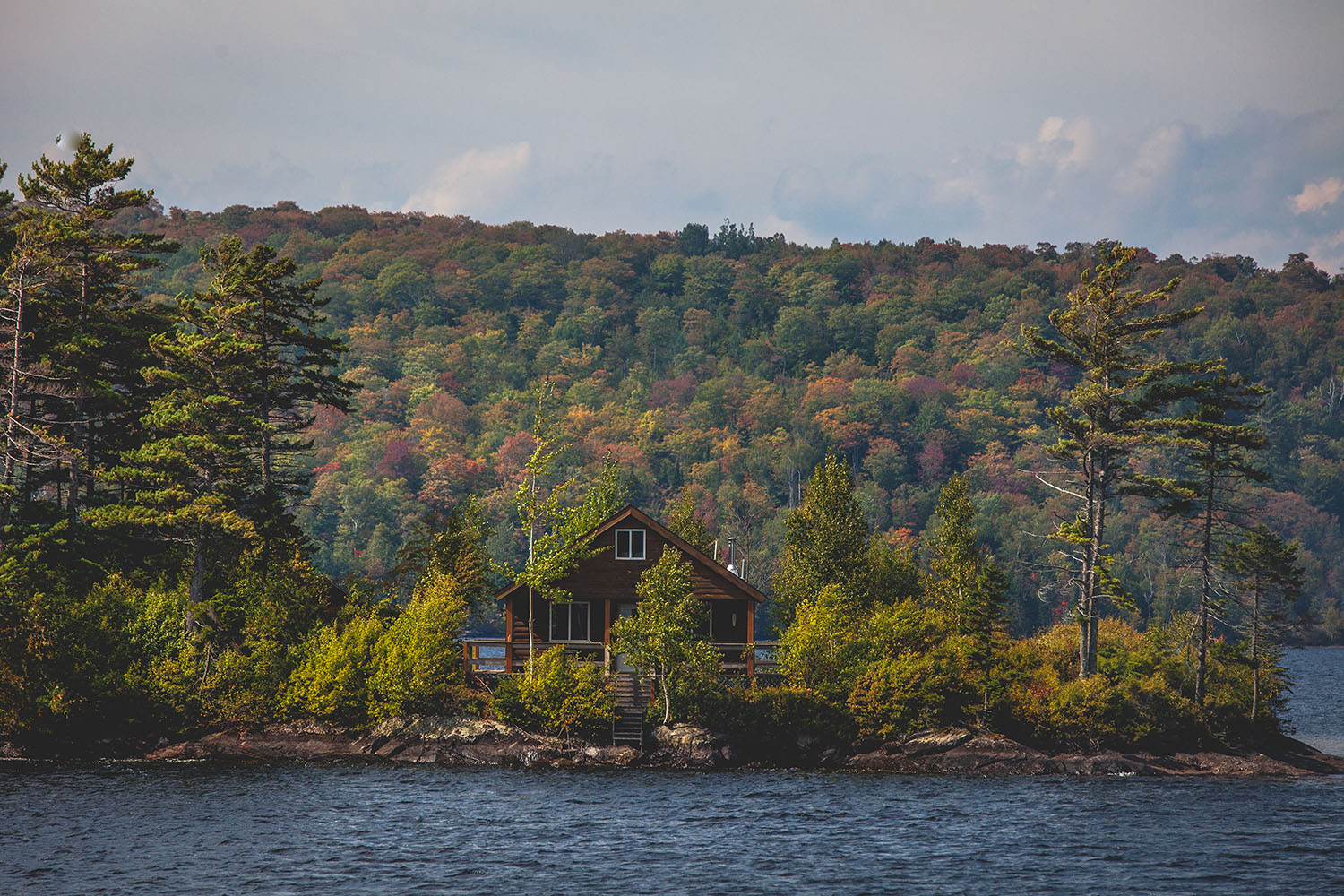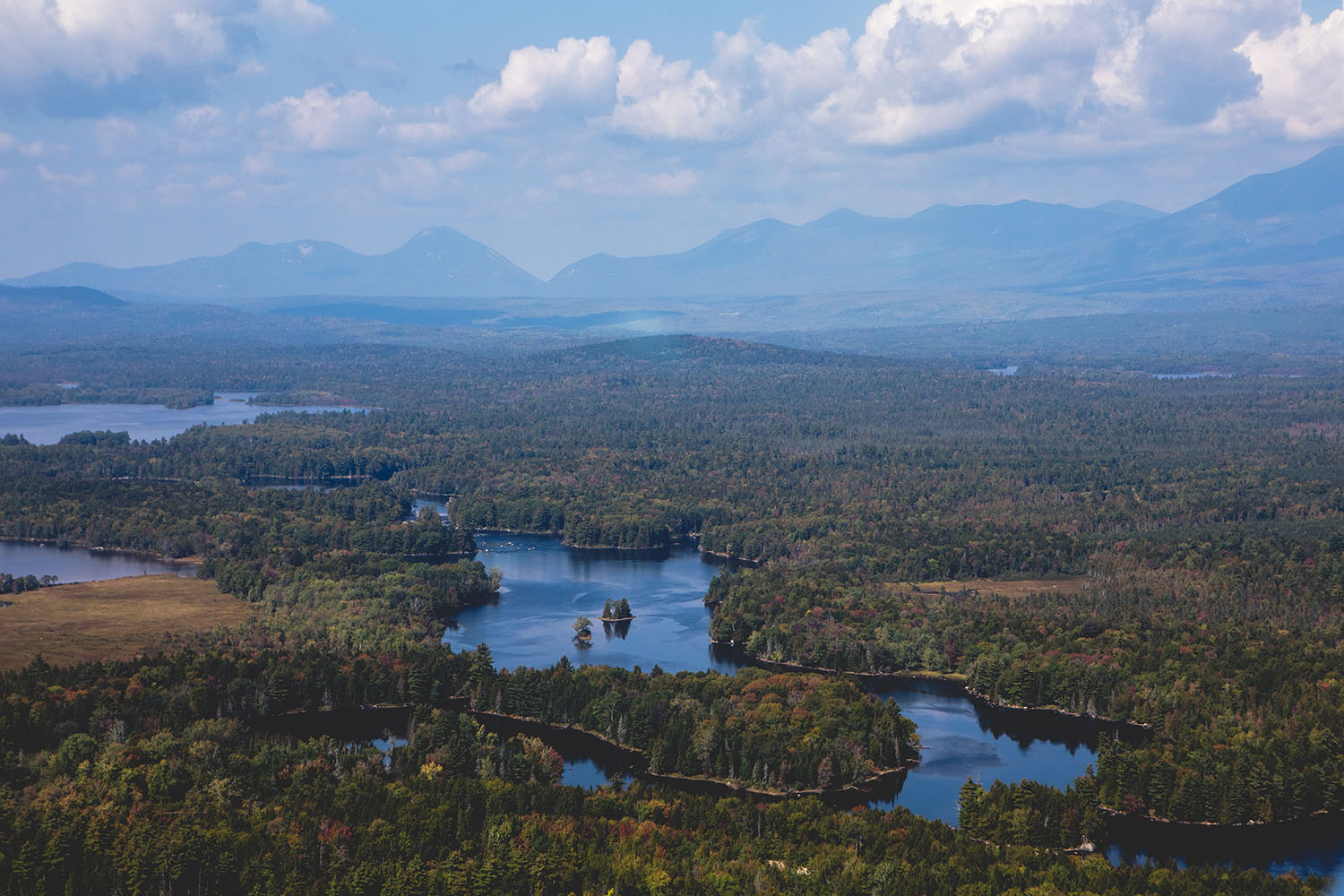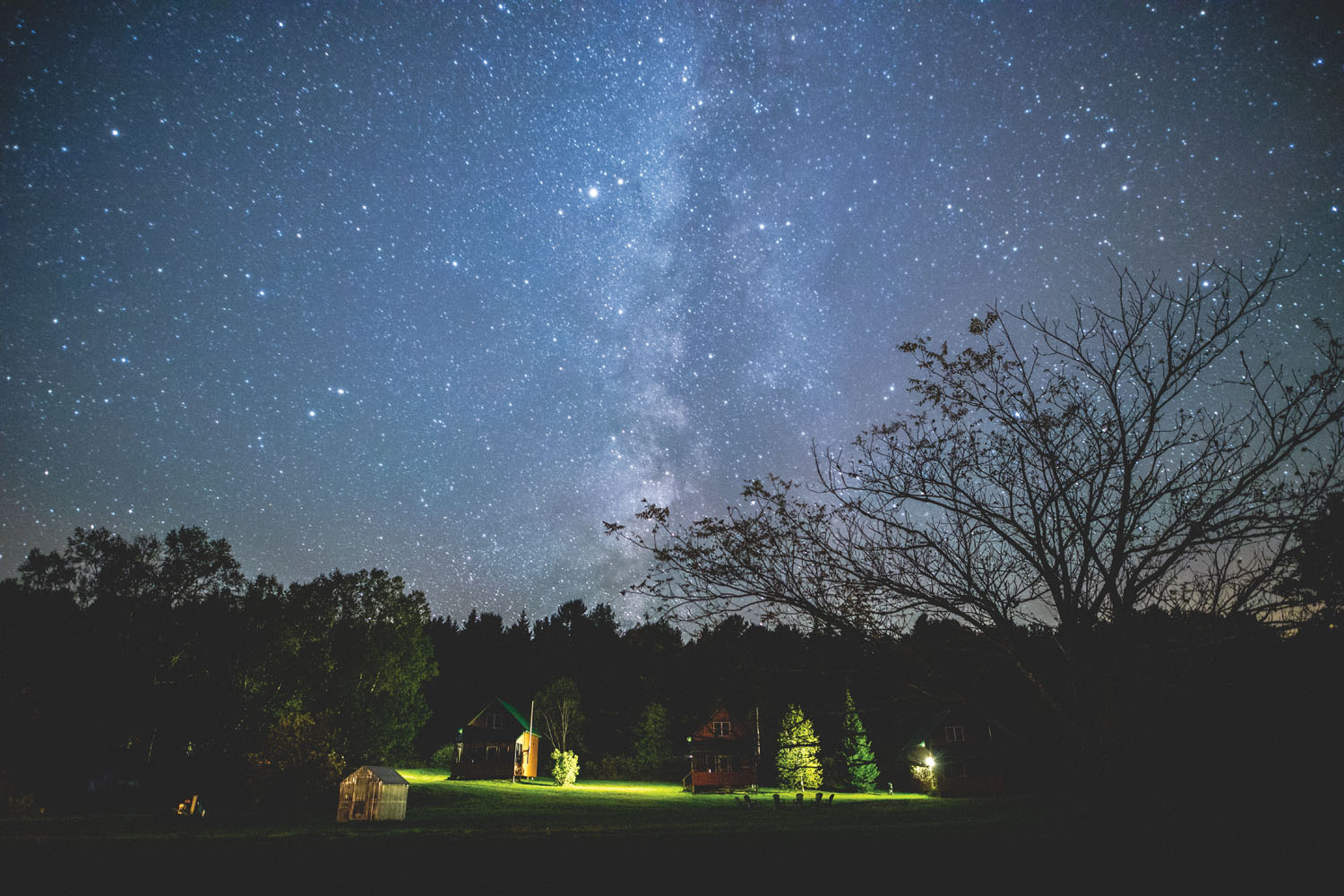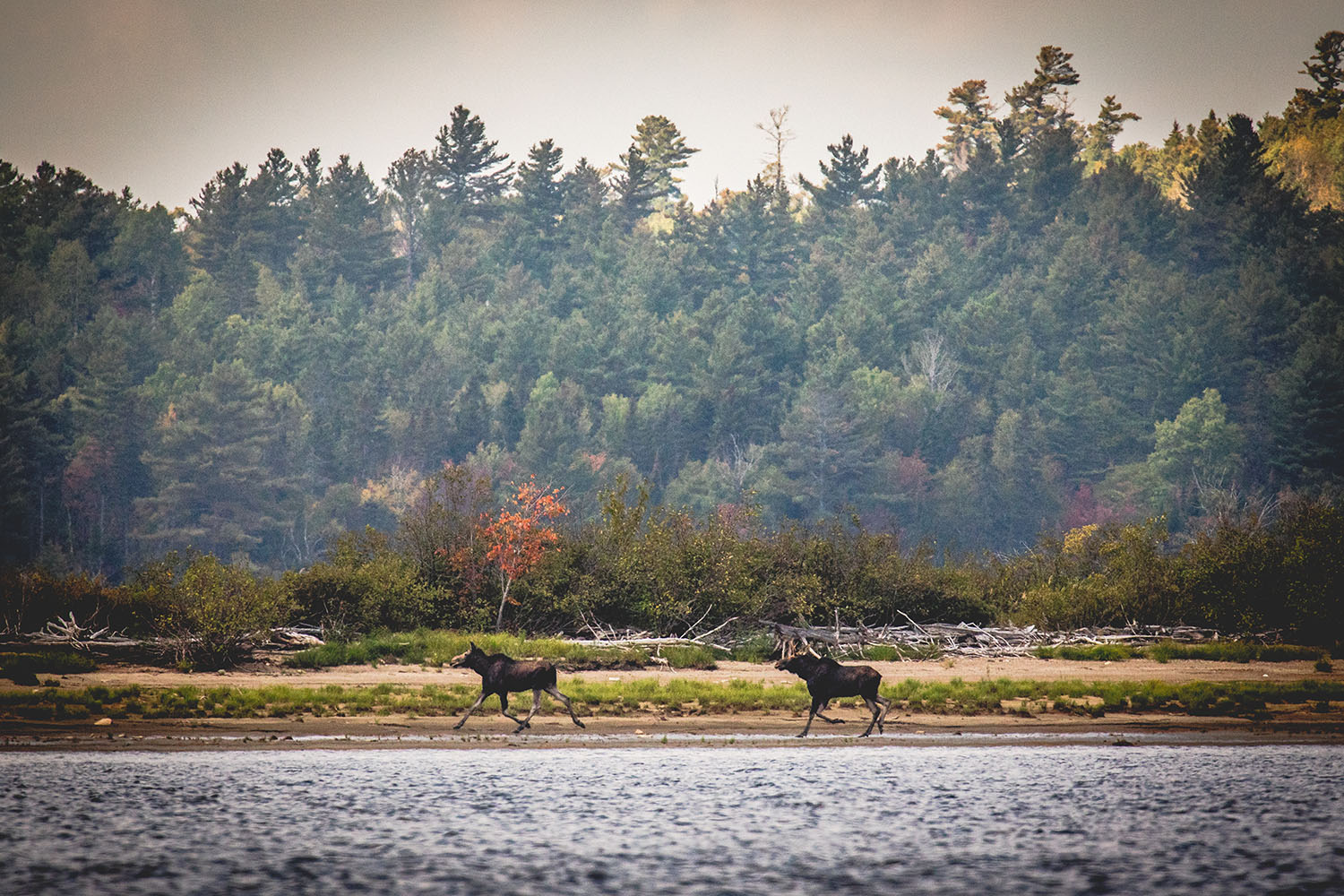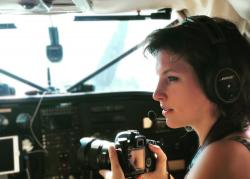1
I used to dream about the dark. I was usually in the woods in the dream. There was an animal nearby, the dim reflection of lake water pushing through the branches.
This night was similar: dark sky, blackened pines, pinprick stars. The only light came from a streetlamp across the field and the Milky Way splitting the sky in two. Silhouettes of maple and oak trees were two shades darker than the night. A puff of wind racing down Chesuncook Lake rustled the leaves and made the dock ramp creak.
This is the North Woods of Maine on a warm September night. Grasshoppers grinding, the dank smell of a pond turning over, the sound of blood rushing through your eardrums, dew water seeping through the toes of your sneakers, a blankness in your mind. It was dusk when I walked into the field, no stars above. Then there were. Stars don’t go away. I wasn’t really looking, anyway; I was scanning the little knoll near the shoreline where Henry David Thoreau spent a cold, wet night beneath his canoe in the fall of 1857. He was forty years old then. In five years he’d be dead. He dreamed about the sawmills circling Chesuncook Lake, hundreds of them cutting the forest flat. A photograph of his dream hangs in the parlor of the Chesuncook Lake House. Propane gaslights hiss above from the pressed-tin ceiling. A vintage hunting magazine with a picture of a World War II soldier charging a canoe sits on a coffee table below. The black-and-white print shows a steamer dragging a half-mile- wide log boom across the lake. It looks like a silver teardrop covering a third of Chesuncook. “Loggers opened this country,” the lake-house owner said. Thoreau wrote, “Think how stood the white-pine tree on the shore of Chesuncook, its branches soughing with the four winds, and every individual needle trembling in the sunlight—think how it stands with it now—sold, perchance, to the New England Friction-Match Company!”
2
The plane shuddered, the pilot scratched his head. Then he hit the throttle, and five hundred yards down the lake the stubby wings cut us free from the Earth. Hundreds of rivers, streams, lakes, mountain ranges, subranges, swamps, and dead waters of the Penobscot River watershed rolled out beneath us. The thimble in the middle was Mount Katahdin—5,267 vertical feet of rock perched like a boulder among the woodlands. The surrounding 12-million-acre North Woods is nearly twice the size of Massachusetts and represents one of the last true wildernesses in the US.
Ancient North American tribes walked to Katahdin to mine red ocher for ceremonies and burials. They buried their dead with offerings of tools, animal bones, carved animal effigies, and small quartz pebbles painted with red ocher. Oral history suggests that they lived for thousands of years along the edge of glaciers during the Ice Age. Sea level was likely more than three hundred feet lower then. Maine fishermen miles offshore occasionally dredge up pottery from submerged settlements and tools like bone and ivory fishhooks, harpoons, and long, narrow, slate lances for hunting whale and swordfish.
The tribe called the Maine coast “the Dawnland” for the first rays of light that hit the continent every morning. Archaeologists called them “Red Paint People”—a vanished tribe. American Indians from coastal Maine spent two centuries telling academics that the tribe was, in fact, their ancestors. (And that they’d like a few hundred of the thousands of exhumed Paleo-Indian corpses stored in the Smithsonian returned.) No one believed them. Then later-uncovered linguistic and archaeological evidence revealed a new time line for the prehistoric North. A dig site thirty miles from a Passamaquoddy reservation—that had been excavated once before by archaeologists who supported the “Red Paint People” theory—dated relics connected to the tribe at 12,500 years old. The Maine tribes were right. No apologies were made; most of the academics were dead by then. When I asked one of the archaeologists how they made the second discovery, he said, “We dug deeper.”
3
I knew that Thoreau had paddled along Chesuncook Lake. Northern Maine was his backwoods muse as much as Walden. One of his first essays on naturalism was published after an earlier expedition to Mount Katahdin in 1846, eight years before Walden was printed. He later paddled the West Branch of the Penobscot and wrote an account of the trip for Sartain’s union magazine. The piece was included in a posthumously published book titled The Maine Woods.
Two of Thoreau’s guides were Penobscot Indians—Joseph Attean and Joe Polis. The group traveled by canoe, in French bateaux, and on foot. Thoreau drank cedar beer and hemlock tea with homesteaders, ate moose lips and learned to speak Abenaki. He floated under the stars while Joseph lured bull moose with a birchbark call. Of the experience, Thoreau wrote, “Thus a man shall lead his life away here on the edge of the wilderness, in Indian Millinocket stream, in a new world, far in the dark of a continent, and have a flute to play at evening here, while his strains echo to the stars, amid the howling of wolves; shall live, as it were, in the primitive age of the world, a primitive man.”
I was a primitive writer—just seventeen—when I first read Thoreau. I grew up on the coast of Maine. Our family also had a lake house in the North Woods, fifty miles southwest of Chesuncook. My great-great-grandfather built it in 1909. I found Walden on a bookshelf there on a rainy July afternoon. I don’t know why I grabbed it. I remember not putting it down for a week. Getting through each page was like untying a knot. Word by word, I pulled strands of meaning from the prose. The descriptions of water, rock, and forest drew me in. I grew up in that environment and knew it well: “A lake is a landscape’s most beautiful and expressive feature. It is Earth’s eye; looking into which the beholder measures the depth of his own nature.”
“He slept under his canoe right there,” the lake-house owner said near the shore of Chesuncook. “They offered him the shack, but he said that was beneath him and slept in the dirt instead.”
4
Trips to our lake house were short and often strained when I was young. My parents’ marriage was dissolving, and something about the North Woods ratcheted up the tension between them—likely the fact that my father loved being there and my mother did not. When we did make it up to “camp,” my brother, sister, and I were on our own. We built forts out of driftwood and pine boughs, dammed streams at a sandy beach, and hunted crawfish under water for hours using hotdog skewers.
The first time my wife saw our lake house she cried she was so happy. When I proposed to her, she asked if we could be married there.
We fit fifty people into the main cabin the next summer and ate off the same card tables that my great-great-grandfather once played poker on. The bookshelf where I found Walden and started my life as a writer was used to store cups and plates.
These places are not sacred. They are crucibles of time. I don’t think about the lake house often. I do think about what I learned there about nature, danger, writing, exploration, and the great and unsettling distance that exists between people. I think about my father, who passed away well before his time—tan and muscular, striding down a cedar boardwalk. His initials, and a century of others, are carved into a wooden bench that sits outside the kitchen cabin.
The wooden seat is so worn and greased it almost looks like wax. The bench was made from white pine harvested, milled, and shaped on the property. There are so many carvings in it, it’s hard to figure out which is which. The signatories all came from cities in the South. They loaded onto trains, wagons, cars, and boats to sit on the porch, stare at the invisible stars, and contemplate the nothingness of the untamed world.
This dispatch is from #VQRTrueStory, our social-media experiment in nonfiction, which you can follow by visiting us on Instagram: @vqreview.


